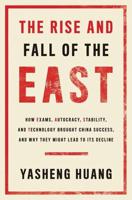Publisher's Synopsis
International Migration: Prospects and Policies offers a comprehensive, up-to-date survey of global patterns of international migration and the policies employed to manage the flows. It shows that international migration is not rooted in poverty or rapid population growth, but in the expansion and consolidation of global markets. As nations are structurally transformed by their incorporation into global markets, people are displaced from traditional livelihoods and become international migrants. In seeking to work abroad, they do not necessarily move to the closest or richest destination, but to places already connected to their countries of origin socially, economically, and politically. When they move, migrants rely heavily on social networks created by earlier waves of immigrants, and, in recent years, professional migration brokers have become increasingly common. Developing countries generally benefit from international migration because migrant savings and remittances provide foreign earnings to finance balance of payments deficits and make productive investments. Some developing nations have gone so far as to establish programs or ministries dedicated to the export of workers. Developed nations, in contrast, focus more on the social and economic costs of immigrants and seek to reduce their numbers, regulate their characteristics, and limit their access to social services. Over time, receiving nations have gravitated toward a similar set of restrictive policies, yielding undocumented migration as a worldwide phenomenon. Globalization also creates infrastructures of transportation, communication, and social networks to put developed societies within reach. In the latter, ageing populations and segmenting markets create a persistent demand for immigrant workers. All these trends are likely to intensify in the coming years to make immigration policy a key political issue in the twenty-first century.










